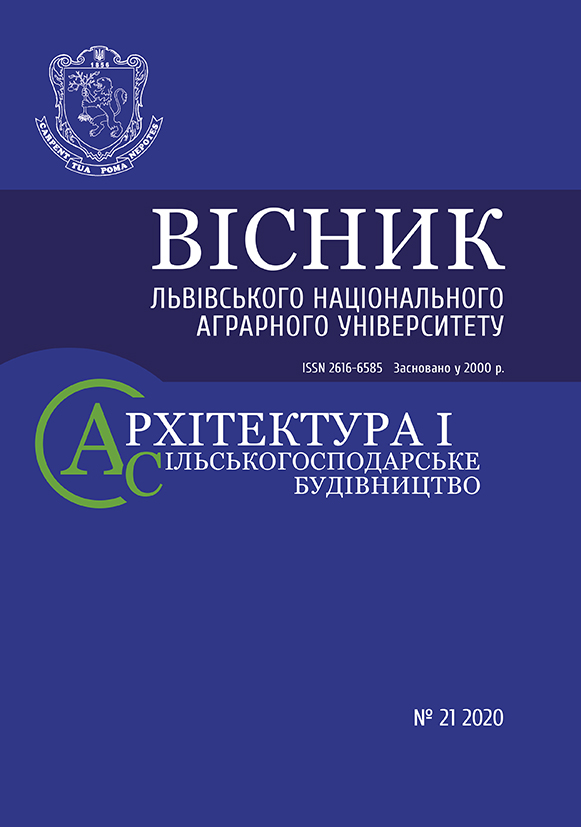Visnyk LNAU: Architecture and Farm Building 2019 №20: 20-22
АBOUT BEARING CAPABILITY OF COMPOSITES UNDER CONDITIONS OF ALL-ROUND STRESS
Bubniak Т. Physics and Mathematics Ph.D.
Lviv National Agrarian University
https://doi.org/10.31734/architecture2019.20.020
Annotation
Use of the constructions, made of composite materials, in the building is impossible without a precise analysis of their bearing capability, predicting of ultimate strength of each concrete material under set conditions of exploitation. Such problems shape the subject of space theory of elasticity, which considers distribution of stresses within solid body, containing various heterogeneities. The elements of force constructions are composed of different oriented undirectional plies or inclusions, e.g. in the form of spheroids, input in a sequence through a thickness. The receipt of reliable and complete information about distribution of the strained-deformed conditions in the construction elements is associated with the use of effective analytical and numeral methods for solution of the tasks of elasticity theory.
Considering the requirements of modern technology, the power structure of the composite should consist of reliable elements, have a pertissible exploitation period, and be insensitive to the onset of the time limit. Development and introduction of new constructive materials forces the necessary to learn how to assess their strength under different types of load.
The effective method of solution of space problems of the theory of elasticity is presented by the Fourie’s method, which is based on representation of the equations of equilibrium over potential functions, expanded in the series for Legendre-associated functions.
The research has solved the problem of distribution of circular and meridian stresses on the effect of comprehensive stretching of the body, which contains spheroid inclusion in the non-ideal mechanical and thermal contact, depending on the inclusion geometry. Basing on numerical analyses, the authors of the work have studied concentration of stresses in the environment and inclusion under all-round stretching and effect of a linear field. The article supplies results of the investigation as to mechanical features of the stress fields.
It is confirmed that under increase of the spheroid semiaxes ratio (b – is a small semiaxis, a – is a large semiaxis) and all-round stretching, concentration of circle stresses significantly increases and concentration of meridian stresses decreases under the the increasing ratio of .
Key words
potential functions, transversal-isotropic body, non-perfect contact, spheroid, field of stresses
Link
- Podylchuk Yu. N. Boundary problems of the statics of elastic bodies. Space problems of the theory of elasticity and plastisity: in 5 vol. V. 1. Kyiv: Sciences. Opinion, 1984. 303 p.
- Sokolovskyi Ya. I., Bubniak T. I. Stressed conditions of transversalo-isotropic environment with spheroid inclusion under non-ideal mechanical contact. Theoretical and Applied Mechanics. 1995. Vol. 25. P. 17-26.
- Bubniak T. I., Yakimets V. T. Characteristics of the concentration of normal stresses on the inclusion surface. Bulletin of the Lviv National Agrarian University: Architecture and Agricultural Construction. 2014. № 15. P. 23-27.
- Bubniak T. I., Famuliak Ya.Ye. Concentration of stresses during torsion. Bulletin of the Lviv National Agrarian University: Architecture and Agricultural Construction. 2017. № 18. P. 8-11.
- 5 Bubniak T. I. Concentration of normal stresses in the inclusion under the effect of linear temperature field. Bulletin of the Lviv National Agrarian University: Architecture and Agricultural Construction. 2018. № 19. P. 46-48. https://doi.org/10.31734/architecture2018.19.046



